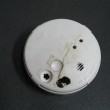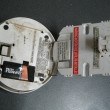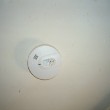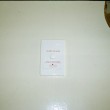A3.2 Fire and smoke detection
It is a compulsory requirement in all states and territories that, in the construction of new houses and during major renovations, mains powered smoke alarms are fitted. Survey data shows that there has been a significant increase in both the proportion of houses with smoke alarms fitted (from 45% of houses to 51%) and the proportion of houses with at least one smoke alarm working (from 36% to 61%) since 2013 to 2024. Still the recent numbers show that 18% of the houses tested have no adequate means of fire detection. From other sections of the Guide we know these houses are older, crowded, subject to harsh environmental conditions. The combination of these factors make the lack of fire detection more critical.
When working properly, smoke alarms can save lives. However, false alarms can be annoying, and because of this some people disable or remove their smoke alarms. It is important to locate the smoke alarms where false alarms are less likely and to choose a smoke alarm that is suited to the room and the environment in which it is used.
The most common household smoke alarm is an ‘ionisation’ type, which can be triggered by cigarette smoke, toasters, cooking fumes, open fires, combustion heaters, steam from the bathroom, or kettles and pots on the stove. In severe cases, high humidity or dust can also cause false alarms in these detectors. Ionisation detectors are best located in a passage, but away from the bathroom door, or in bedrooms and living rooms
An alternative ‘photo-electric’ type detects smouldering fires, which have larger particles in the air. It is less likely to be falsely triggered by cooking, but more susceptible to dust, humidity and insects. Photo-electric alarms are best used in rooms that are near the kitchen area and in bedrooms where smouldering type fires are more likely to occur.
Heat alarms are designed to trigger when the temperature reaches 58°C but do not detect smoke. Heat alarms are only suited for use in kitchen areas and cannot be substituted elsewhere for smoke alarms.
Other strategies to reduce impact of false alarms include:
- providing large capacity, external exhaust vents in the bathroom and kitchen, and checking these are working before the smoke alarm is fitted
- choosing an alarm that has a remote and easily accessible ‘hush’ or ‘isolator’ switch, which will enable the residents to temporarily disconnect the detector after a false alarm. This will allow sufficient time for the smoke or steam to clear and then the unit will automatically reset.
Design and Specification
Ensure
- A3.2.1.
hard wired interconnected smoke alarms are installed in all new houses and in upgraded or renovated houses
- A3.2.2.
smoke alarms are correctly positioned (the number of bedrooms and house layout will affect the selection, location and quantity
- A3.2.3.
exhaust vents and located in the bathroom and kitchen
- A3.2.4.
selecting an alarm that has a remote and easily accessible ‘hush’ or ‘isolator’ switch, which will enable the residents to temporarily disconnect the detector after a false alarm
Consider
- specifying a smoke alarm with a wall mounted hush or pause button that automatically resets after five minutes, or installing a timer switch to the smoke alarm so that it automatically resets (confirm hush buttons, if installed, are easy to reach by people with disabilities)
- installing fire extinguishers and/or fire blankets in kitchens
- installing externally vented exhausts to kitchens
- in the tropics, discussing the selection, installation and siting of smoke alarms with an electrician to make sure the alarms do not falsely trigger because of humidity or insects
- installing low cost domestic sprinkler systems to meet AS 2118.5
- installing interconnected smoke alarms, which use 10 year life, rechargeable backup batteries to reduce maintenance costs
- installing additional photo-electric type smoke alarms in bedrooms.
- installing alternate smoke alarm systems for people with hearing difficulties, eg ultra loud alarms, strobe lights and/or vibrating pad systems
- installing multi-sensor smoke alarms (eg photoelectric and heat) that offer improved resistance to false alarms
Real world examples of Solutions
- A3.2.1.
Quality control
- all smoke alarms have been installed as required by local regulations, are connected to the mains power and are working

- COMPLETED DESIGN & SPECIFICATION
DURING CONSTRUCTION
AT HANDOVER
FINAL COMPLETION
- COMPLETED DESIGN & SPECIFICATION
- each smoke alarm has a remote and easily accessible ‘hush’ or ‘isolator’ switch and they are working

- COMPLETED DESIGN & SPECIFICATION
DURING CONSTRUCTION
AT HANDOVER
FINAL COMPLETION
- COMPLETED DESIGN & SPECIFICATION
- exhaust fans have been installed where specified in bathrooms and kitchens, are vented to the outside and are working

- COMPLETED DESIGN & SPECIFICATION
DURING CONSTRUCTION
AT HANDOVER
FINAL COMPLETION
- COMPLETED DESIGN & SPECIFICATION
- flues have been fitted to wood heaters and are safely vented through the roof and the flue is isolated from all combustible roof structure.

- DURING CONSTRUCTION
AT HANDOVER
FINAL COMPLETION
- DURING CONSTRUCTION
- all smoke alarms have been installed as required by local regulations, are connected to the mains power and are working
Maintenance
As part of cyclical maintenance check that:
- smoke alarms are working by pressing the test button

- Local Maintenance Team
- 3 Months
- smoke alarms are vacuumed clean every 6 months to remove dust, insects and other pollutants by the resident or local maintenance team

- Local Maintenance Team
- 6 Months
- the 9 volt disposable battery in each smoke alarm unit, (that acts as a back up if the mains power is disconnected for a brief period), is replaced every 12 months by the resident or local maintenance team

- Electrician, Local Maintenance Team
- 12 Months
- smoke alarms are installed in older houses

- Electrician
- 24 Months
- before winter, that the wood heater flue is clean and door seals do not have smoke leaks

- Wood Heater Specialist
- 12 Months
- exhaust fans in bathrooms and kitchens are operating and filters are cleaned by the resident or local maintenance team

- Electrician, Local Maintenance Team
- 6 Months
- residents and housing managers have information on the operation, maintenance, checking and disabling of smoke alarms.

- Housing Management
- 12 Months
- smoke alarms are working by pressing the test button
Standard And References
NCC Volume Two & Housing Provisions - Part H3, H3P2, H3V3, H3D1 to H3D6 inclusive.
AS 3786:2023 - Smoke alarms using scattered light, transmitted light or ionization (ISO 12239:2021, MOD)




